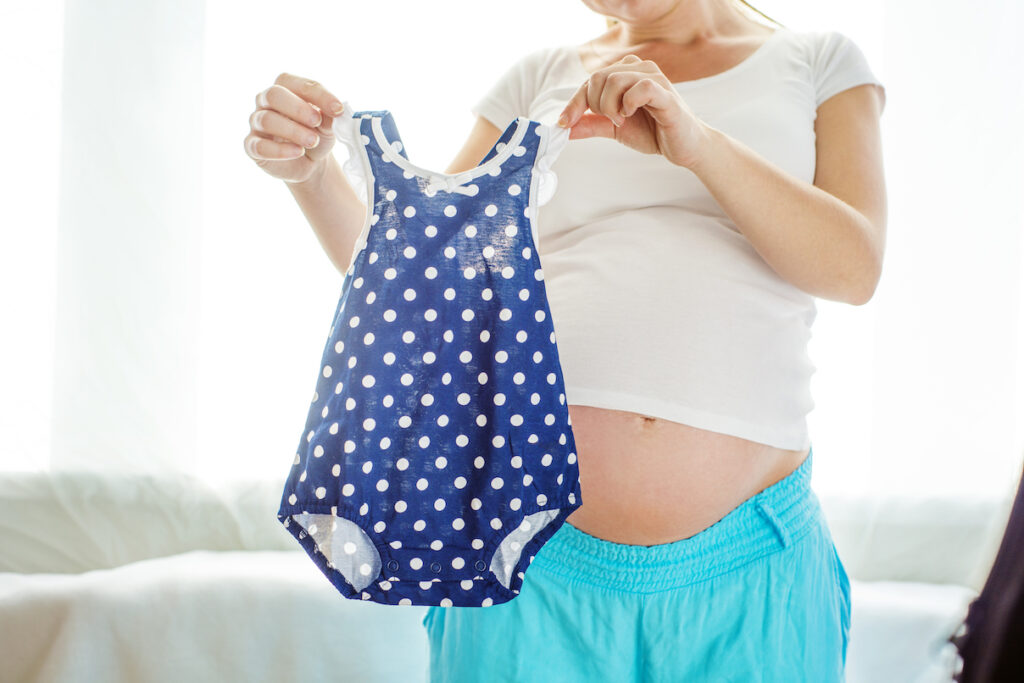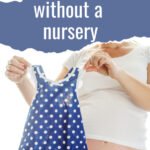New Parent Advice: Nesting Without a Nursery
Pregnancy reconnects us with some of nature’s most primal instincts. Just hearing the term nesting might bring the image to your mind of a beautiful round mama robin tirelessly building her nest in just the right spot.

Most (but not all) pregnant women experience the nesting instinct, too. Even fathers-to-be aren’t immune to the uncontrollable urge to clean, purge, or just get things in order for the arrival of the new addition.
To see nesting beautifully in action, keep an eye to nature rather than TV’s stereotypical depiction of the pregnant woman cleaning neurotically and sobbing because the nursery trim doesn’t match the flowers in the crib skirt.
Aside from birds, we don’t often see how animals in the wild prepare for their newborn’s arrival. But if you’ve ever watched an expecting mama cat or dog gathering old shirts or a stuffed animal to her favorite cozy spot, you’ve seen the perfect example of using what’s already around to create a warm, safe environment for the new little one.
Should Baby Sleep in a Separate Room?
While mothers have been nesting since the beginning of time, placing baby in a separate room is only something we’ve been doing for the last few decades. Parenting author Alice Bolster said,
“Human infants are the most dependent of all creatures and for the longest amount of time. We would not have survived as a species if cave mothers had put their offspring in another part of the cave at night or left them for long periods of time during the day. We may have the means to separate ourselves from our young, but biologically, we weren’t meant to and it still upsets the baby and mother.”
That’s why you’ll find many natural or back-to-basics families choosing to keep baby in the room with them for the first months or even years.
“My children each made a choice to move out of the family bed when they were ready (around ages 3 and 5), and they share a room now,” explains attachment-parenting mother, Kelly Moore. “It is natural for tiny infants to be with their mothers 24/7. Co-sleeping, when done safely, is the best choice for babies as it regulates breathing, aids breastfeeding, and helps prevent SIDS.”
Or as many natural parents say… If baby could talk, he’d say he wants to be where you are.
Deciding Where Baby Will Sleep
Read up on all of your sleeping options before the birth. If you follow the lying-in, or babymoon, tradition you might naturally find what works for your family.
Remember, you can always change your mind based on what your baby prefers or what works best for you.
Family bed
You may already have an opinion on the family bed. Or you may have had an opinion that has changed during your nesting period. Some parents think they could never sleep with an infant, but once the baby arrives and they see how easy it is for nighttime parenting – especially breastfeeding – many reconsider. Always be sure to follow safe co-sleeping guidelines and listen to your instincts.
Sidecar sleeper
If you like the idea of having baby within your reach – but out of your rolling zone – the sidecar is a versatile option. The Arm’s Reach Co-Sleeper nestles right up next to the bed, so you don’t have to get up for nighttime nursing.
Cradle
When you consider how baby has enjoyed constant movement for the last 9 months, you can see how she may prefer a bed that recreates that feeling. As baby moves in a cradle, her weight creates a swaying movement that can lull her into a deeper sleep.
Crib in your bedroom
Some new parents just feel safer with baby in his own confined space. If there’s space in your bedroom for a full crib, this might be the option that helps everyone sleep solo soundly but still in the same room.
Baby Furniture: What do you really need?
If you choose to forego the nursery, there are a couple of non-crib items you may need to address. Most nurseries are equipped with a crib, changing table, diaper pail, rocking chair or glider, and a closet.
A rocker or glider can go in any room with available space, or you may find that you prefer nursing or holding baby to sleep from your favorite corner of the couch. About half the moms we’ve asked say the disposable diaper pail became one more thing to add to the mounting housework when you have an infant.
Changing table
Without a nursery, there may not be space for a changing table. It’s no great loss, as this is usually a temporary piece of furniture. Play yards (like this one from Joovy) or pack ‘n play sets are extremely versatile and many include a changing table accessory. Test them out during your nesting phase to make sure the height is comfortable on your back. You’ll be leaning over it a lot!
Diaper organization
If you’re a cloth diapering family, the Thirsties blog has some super useful ideas for getting your stash in order. For disposable diapers (choose safer and sustainable disposable diapers), you can add a diapering caddy to hold diapers, wipes, and your homemade diaper rash balm.
Clothing storage
This is where extra closet space comes in handy. Clear a rod for hanging clothes (it doesn’t have to be a long space) and make space for some baby-sized storage bins. Your play yard may have an optional organizer. Or choose an over-the-door storage option that can be moved from room to room if needed.
Just like there’s no one-size-fits-all approach to parenting, there’s no one way to settle baby into your new family. Keep your expectations realistic, pay attention to how everyone adjusts, and give yourself plenty of grace during this time of transition.
Creating a Safe & Eco-Friendly Nursery
If you have the space and decide to set up a nursery, here’s how to do it safely and sustainably.
Creating an eco-friendly nursery means keeping as many chemicals and unnatural by-products out of your baby’s space as possible. Even if you can’t address everything sustainably, your efforts toward creating a healthy, clean, non-toxic space will absolutely benefit the health of your new little one.
Chemicals in carpets, furniture, mattresses, and even household dust are all contributing to our collective chemical body burden. Flame retardants can manifest as a variety of disorders in the body and endocrine disruptors are a hormonal and potentially neurological threat to babies and kids.
ECO-FRIENDLY NURSERY ESSENTIALS
Each family’s needs are different, but here are the basics you’ll want to make sure you have a plan for.
A crib like the Delta convertible crib made from sustainable materials and non-toxic finishes, is a safe choice for your nursery. Look for a lead and phthalate safe option that’s GREENGUARD Gold Certified.
The same goes for crib mattresses. Naturepedic’s organic crib mattresses are made from all natural materials that meet more safety certifications than any other mattress brand.
You’ll also want to choose safe / green / organic options in the following accessories:
The HALO Bassinest Swivel Sleeper
Arm’s Reach Co-Sleeper
Organic cotton crib sheets
Non-VOC wall paint
Nursery furniture made from solid woods (no glues, formaldehyde, or veneers)

